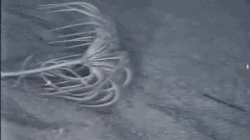Like last year, I would like to ponder on the most exciting records that this year brought to me...
Coalesce - Ox (relapse records)
I always thought they split up some years ago, so I was a little bit surprised as the band announced a new record and a tour this year. I didn’t expected too much because most of such reunion-records are rather lame and bands usually never find their ingenuity of the “early days”. In this case, however, it is not a typical reunion because they just split and re-formed many times. Long story short: Ox (both, Lp and ep) completely blew me away. It’s like taking the best part of every Coalesce release (including their Led Zeppelin cover album) and welding it to a perfect album. They even made it to include clean vocal parts within some songs, which in my view usually appears misplaced in such music. The blunt guitar riffing topped with the acridly barking vocals is typically coalesce but the clean singing and the almost "morriconesque" interludes really make it a special record. I think this is probaly the last Hardcore album that really means something to me.
Baroness – Blue Record (relapse records)
Gaudiest metal record of all time. Baroness once emerged from a rather rough small cove embedded somewhere between Hardcore/Crust Mountain and a more advanced Heavy Metal Volcano not unlike early Mastodon. At least since their last release “red album” they got a little bit more straight forward and fancy. I don’t mean this in a negative way. The “blue record” follows this path consequently. It twinkles and sparkles with every pearly guitar riff passing your auditory meatus. Not to mention the hymnal vocal parts that instantly reminded me of Hot Water Music. Sometimes, I felt a little embarrassed because some songs are so cheesy but at the same time it sounds amiable and refreshing for this kind of music where every band tries to sound as evil and brutal as possible. This is a honest release of a honest band.
Bat for lashes - Two suns (Emi)
I don’t know too much about pop so I can’t present a thorough review like for the records above. This is a very fragile and spooky pop album that was my background music as I walked through summer nights of Zürich.


















































